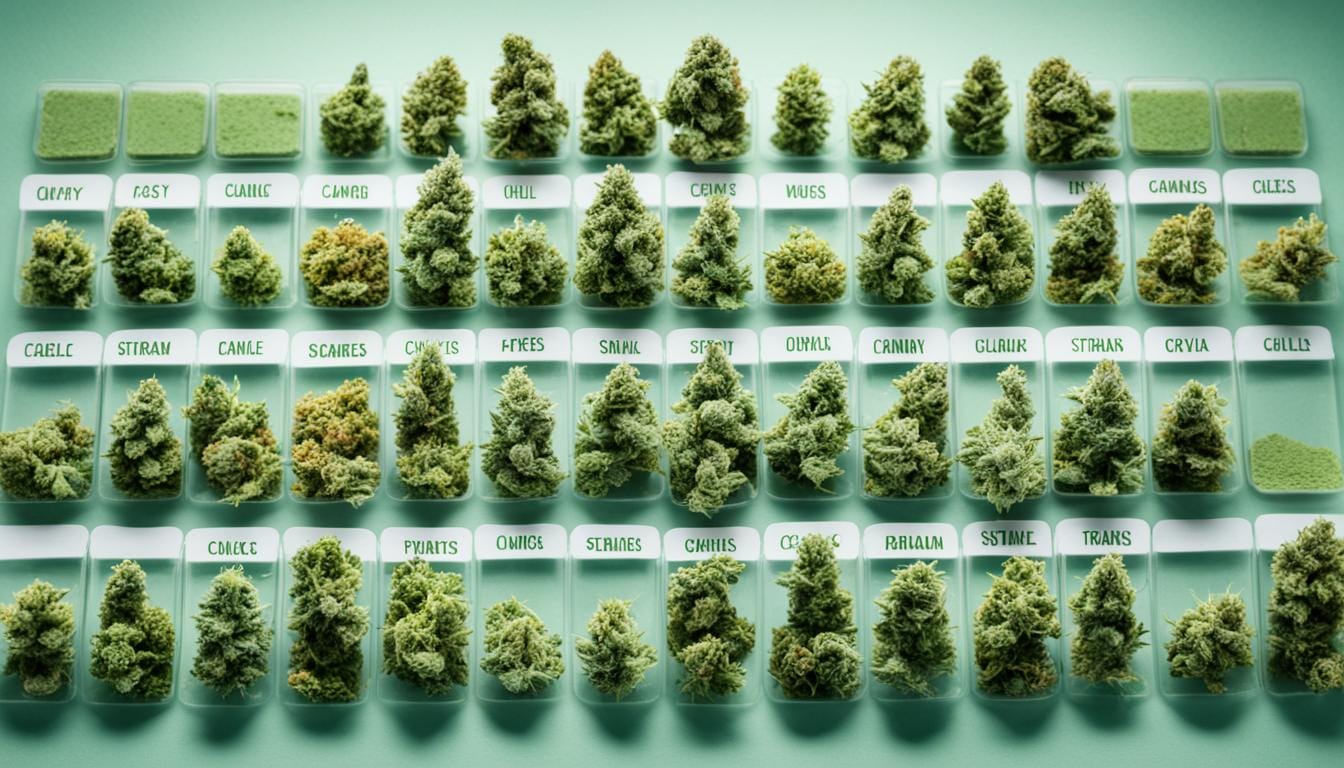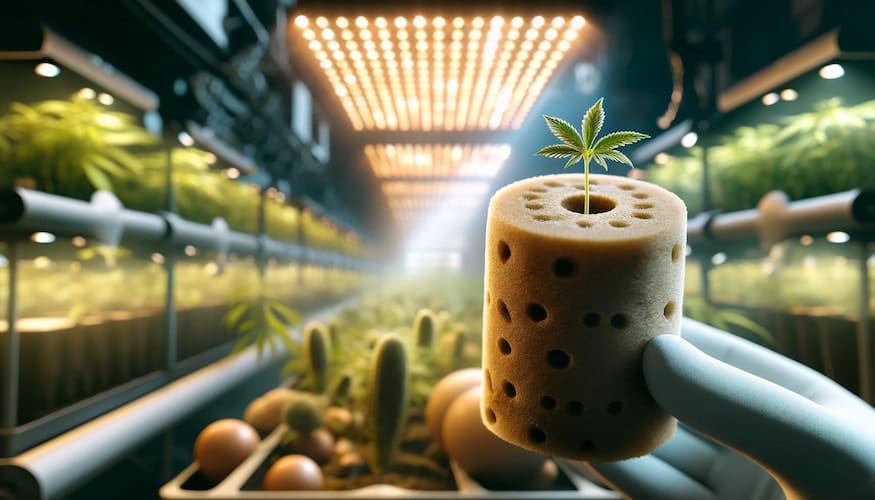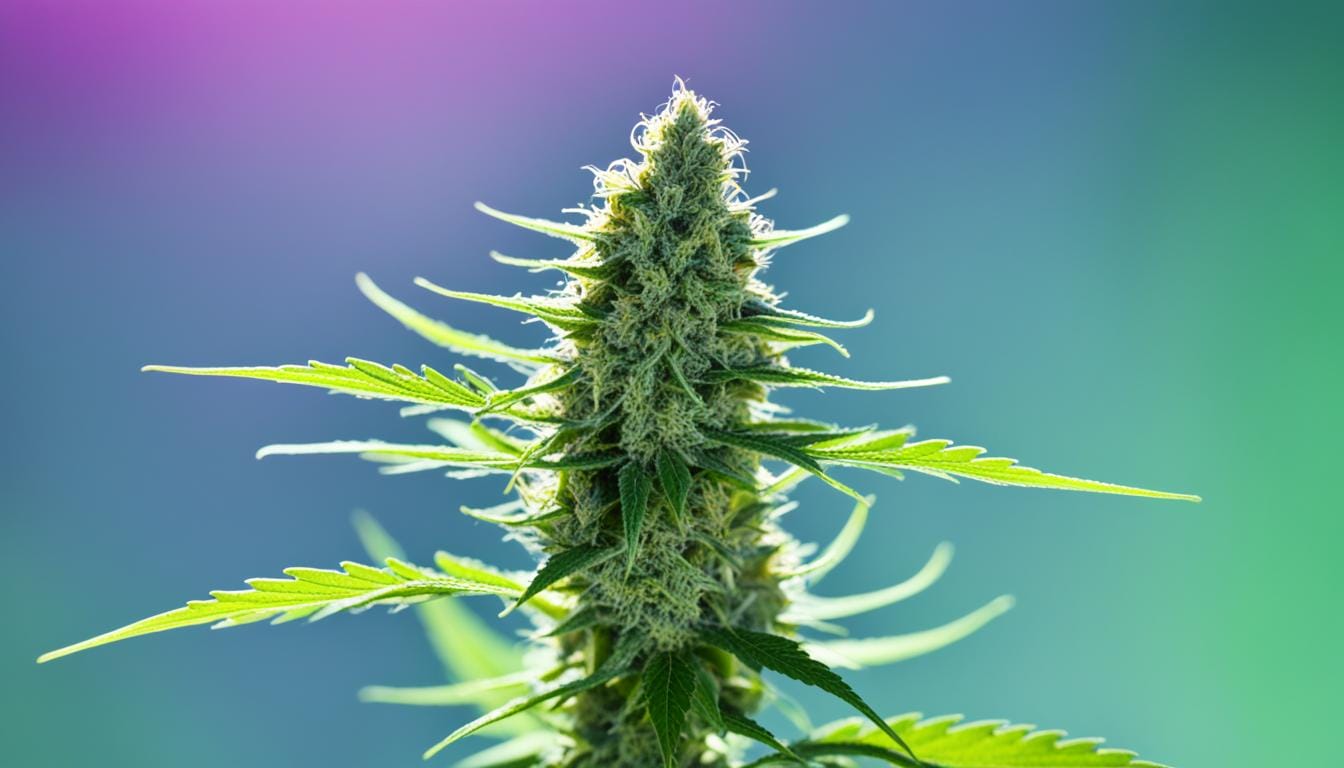Discover top mold-resistant feminized cannabis strains perfect for growers facing humidity challenges. Optimize yield with the best genetics for damp climates!
Master the Method: How To Take Clones of Cannabis Plants
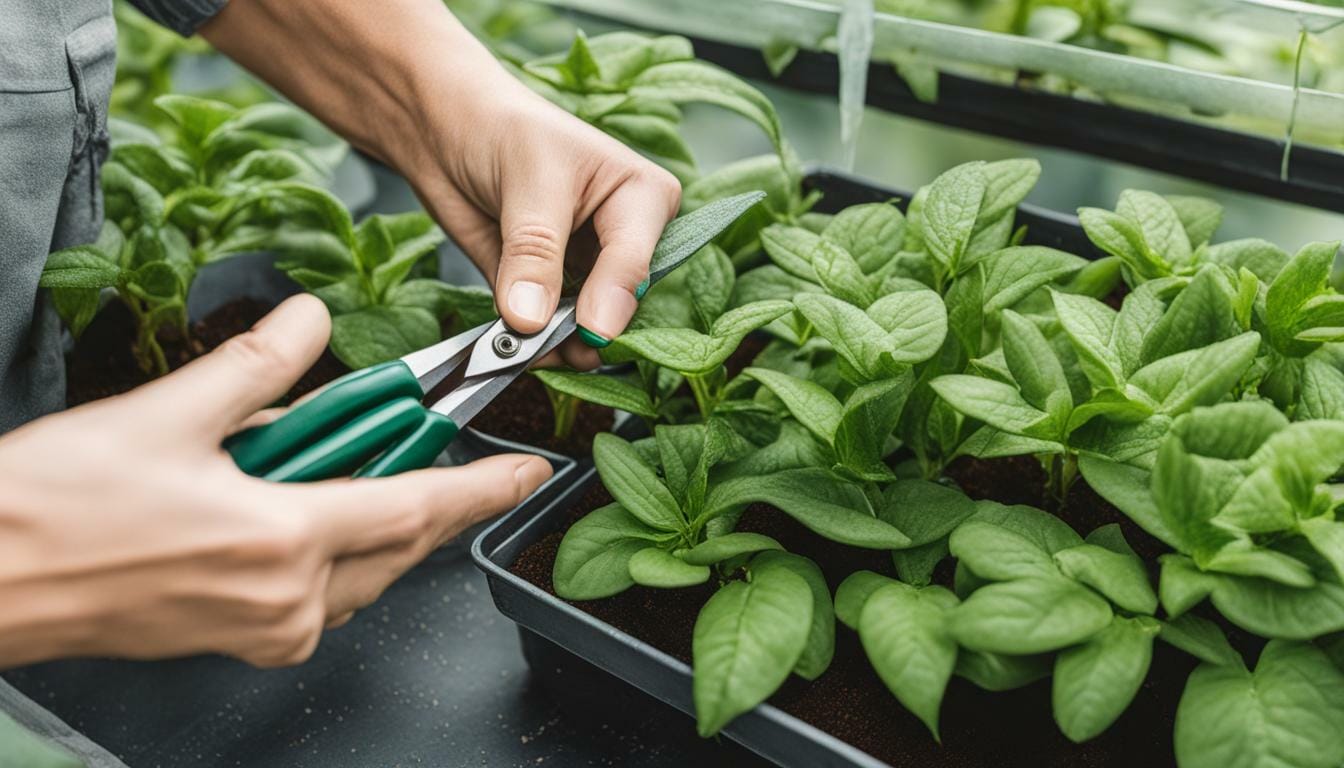
Welcome to our comprehensive guide on how to take clones from cannabis plants! Whether you’re a beginner or an experienced grower, mastering the cloning process is crucial for propagating your garden and maintaining genetic consistency. In this guide, we’ll take you through the step-by-step process of taking clones from cannabis plants and provide tips and best practices for cloning.
Before we dive into the step-by-step process of cloning, it’s essential to understand the benefits of cloning cannabis plants. Cloning allows you to preserve desirable traits, ensure consistency, and increase yield. Selecting the right mother plant, creating a suitable environment, and establishing proper rooting conditions are critical to successful cloning.
Key Takeaways:
- Cloning is a valuable technique in cannabis cultivation for maintaining genetic consistency and preserving desirable traits.
- Choosing the right mother plant is crucial for successful cloning.
- Preparing your cloning tools and environment is essential for optimal rooting conditions.
- Rooting is a critical phase in the cloning process, and proper care must be taken to ensure successful propagation.
- Regular monitoring and troubleshooting are crucial for identifying and addressing potential issues during cloning.
Why Clone? Understanding the Benefits of Cloning Cannabis Plants
When it comes to propagating cannabis plants, there are several techniques to choose from. One of the most popular is cloning, which involves taking cuttings from a “mother” plant and using them to grow genetically identical “clones.”
Cloning cannabis plants offers several benefits, making it a preferred propagation technique for many growers. Successful cloning methods allow for preserving desirable traits, such as potency or flavor, and ensure genetic consistency in your garden.
Propagation techniques like cloning also provide an efficient way to increase your yield. Instead of starting from seed every time, you can clone a healthy mother plant, saving time and resources.
Overall, cloning cannabis plants can significantly simplify and improve the cultivation process. In the following sections, I will provide detailed instructions for taking clones, a clone care guide, selecting mother plants, and caring for your clones through the rooting phase and beyond.
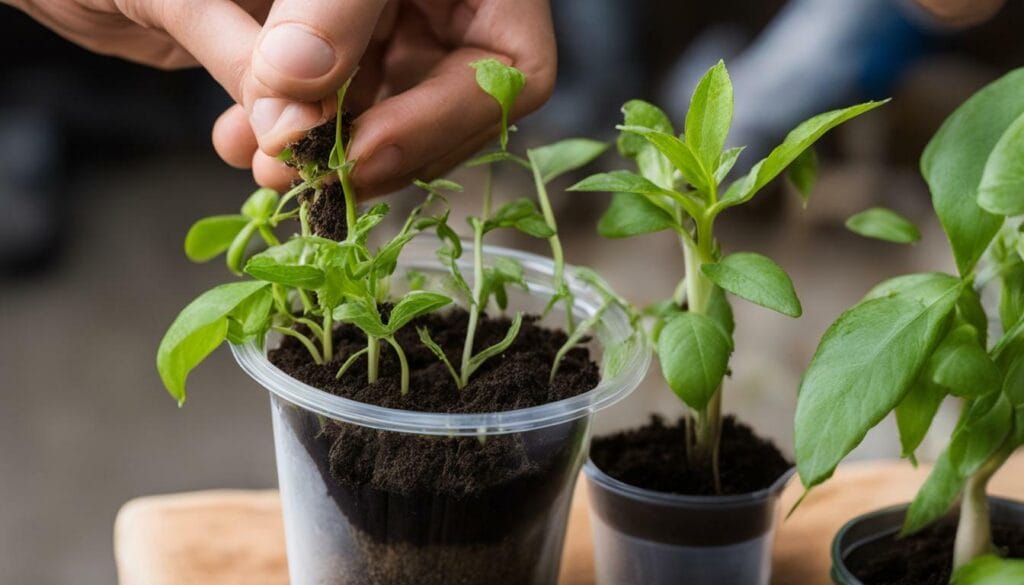
Before you can start taking clones, you need to select the right mother plant. The ideal candidate for cloning is a healthy female plant that exhibits desirable traits, such as vigorous growth, high yield, and potency. It would be best to look for plants free of diseases and pests, as these can be passed on to the clones.
When choosing your mother plant, it’s important to consider the age of the plant. While a younger plant may produce more vigorous clones, a more mature plant has a more established root system and is typically more stable. Additionally, a plant in the vegetative stage for at least two weeks will have a higher success rate for cloning.
Another factor to consider is the phenotype of the plant. A phenotype refers to the plant’s physical characteristics, such as the shape and color of the leaves and flowers. When selecting a mother plant for cloning, the best practice is to take one that exhibits the desired phenotype, increasing the likelihood of producing clones with the same traits.
Ultimately, the key to selecting the best mother plant for cloning is to look for healthy, vigorous plants that exhibit the desired traits. You can ensure successful cloning and maintain genetic consistency in your garden with the right mother plant.
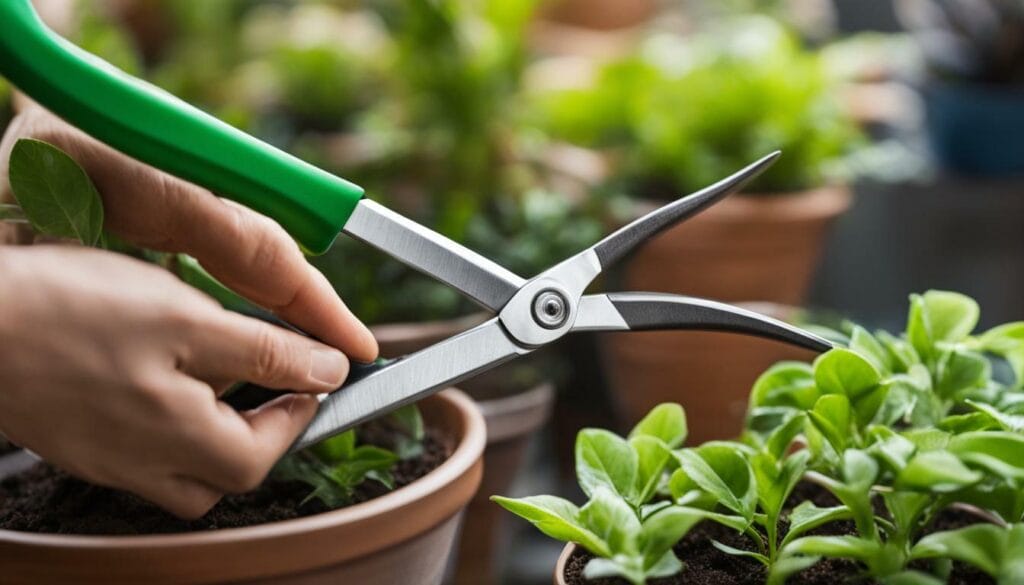
Before taking clones, you must prepare your cloning tools and environment. This will ensure your clones have the best chance of rooting and developing into healthy plants. Here are some cloning tips and best practices to follow:
Choosing Your Cloning Medium
The first step is to choose your cloning medium. This can be soil, rockwool, peat pellets, or any other medium that can hold moisture and provide oxygen to the roots. It’s important to choose a neutral pH medium that is free from any pathogens or contaminants that could harm your clones.
One popular cloning medium is Rockwool. It’s easy to use and provides excellent aeration and moisture retention. To prepare your rockwool, soak it in pH-balanced water for at least an hour, and then drain off any excess water.
Selecting Your Cloning Tools
Next, you need to select your cloning tools. These should include a sharp pair of scissors, a razor blade for making clean cuts, and a clean and sterilized cloning machine or tray for holding your clones.
It’s important to sterilize your tools before using them to prevent the spread of bacteria and disease. You can do this by soaking your scissors or razor blades in a 10% bleach solution for at least 30 minutes, then rinsing them with clean water and drying them with a clean cloth.
Creating the Optimal Environment
Once you have your cloning medium and tools, you need to create the optimal environment for rooting your clones. This includes maintaining proper temperature, humidity, and light levels.
Most clones root best at temperatures between 72 and 75 degrees Fahrenheit and humidity levels between 70 and 80%. You can use a humidity dome or a plastic bag to maintain the desired humidity levels. Be sure to ventilate the crown or bag regularly to prevent mold and disease.
When it comes to lighting, clones do not need much light in the beginning stages of rooting. A simple fluorescent lamp or a T5 grow light can be enough to provide the necessary light for your clones.
Summary of how to take clones
Following this cloning guide for beginners can ensure a successful cloning process. Choosing the suitable cloning medium, selecting clean and sterilized tools, and creating the optimal environment can make all the difference in the success of your clones. In the next section, I will guide you through the step-by-step process of taking clones and explain the cloning process explained.
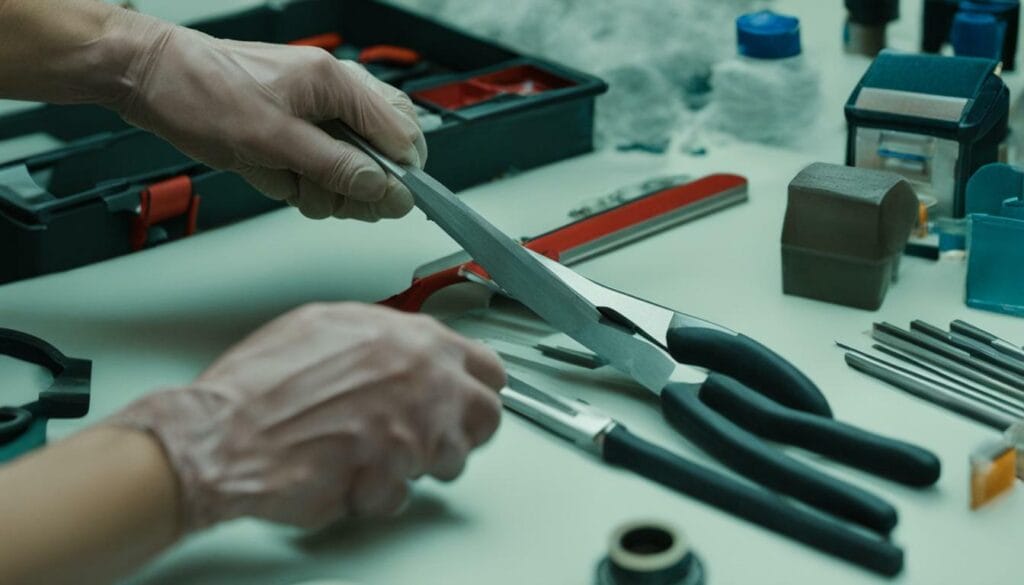
Now that everything is in place, it’s time to start taking clones. Follow these step-by-step instructions to ensure successful cloning.
- Choose the right branches: Look for healthy branches and avoid cutting from the top of the plant to ensure maximum success.
- Prepare the tools: Use a sharp, sterilized blade to make a clean cut, and dip it in a rooting hormone to encourage root development.
- Cut the clones: Cut 4-6 inch sections at a 45-degree angle, making sure to include at least one node. Remove the lower leaves to reduce moisture loss.
- Treat the clones: Dip the bottom of each clone into the rooting hormone and then gently shake off excess powder.
- Plant the clones: Insert each clone into your chosen cloning medium and gently press the soil around it. Make sure to keep the soil moist and avoid overwatering.
- Provide proper lighting: Use low-intensity light for the first few days to reduce stress on the clones, then gradually increase the light intensity over time.
- Regulate temperature and humidity: Maintain a temperature of around 72°F and a humidity level of 80% to promote root growth.
- Monitor and adjust your clones and adjust lighting, temperature, and humidity levels as needed to ensure their healthy growth.
Remember to be patient and gentle during the cloning process. With the proper techniques and care, you can successfully propagate cannabis plants and maintain genetic consistency in your garden.
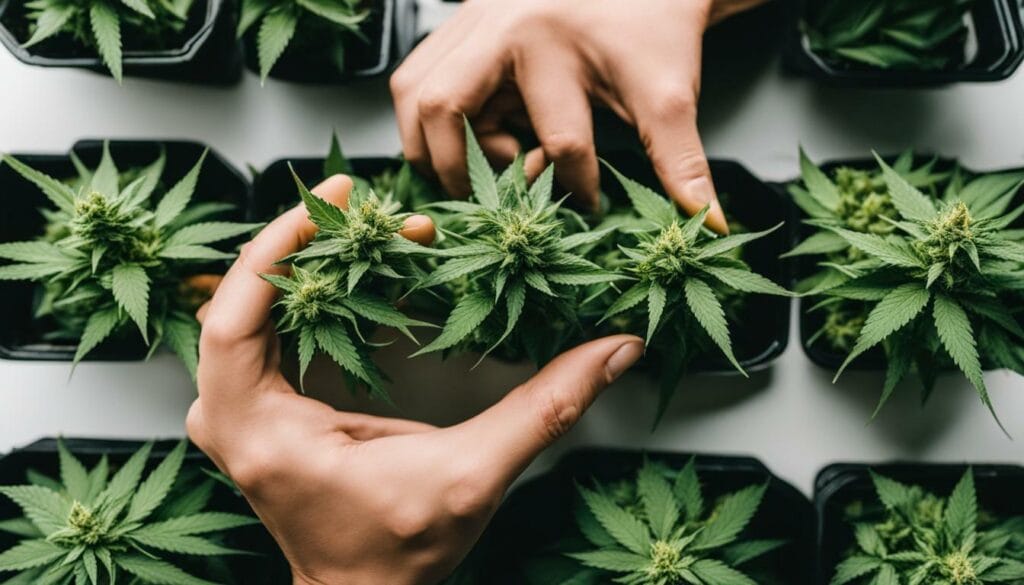
Rooting determines whether your clones will grow into healthy, robust plants. Creating an ideal environment promoting root growth would best establish optimal rooting conditions. Here’s how:
| Lighting | While your clones are rooting, they need about 18 hours of light daily from a fluorescent bulb or an LED grow light. Ensure the lighting is not too close to the clones, which can cause them to dry out or become damaged. Keep the morning at least 2-3 inches above the clones. |
|---|---|
| Temperature | The ideal temperature for rooting clones is between 70-75°F. Ensure that the temperature in your cloning area is consistent and there are no sudden fluctuations. A heat mat can help maintain the temperature in a cooler climate. |
| Humidity | Humidity is crucial for successful cloning. You can use a humidity dome or cover your clones with a clear plastic bag to maintain a high humidity level. Keep the humidity level between 70-80% to prevent drying out. Avoid misting the clones directly, as this can cause waterlogging. |
During the rooting phase, it’s essential to keep a watchful eye on your clones for any signs of stress or issues. Common issues during this phase include stem rot, mold, and wilting. To prevent these problems, inspect and monitor your clones, adjust environmental conditions if necessary, and follow best practices for clone care. By carefully establishing rooting conditions and monitoring your clones, you can ensure successful propagation through cloning.
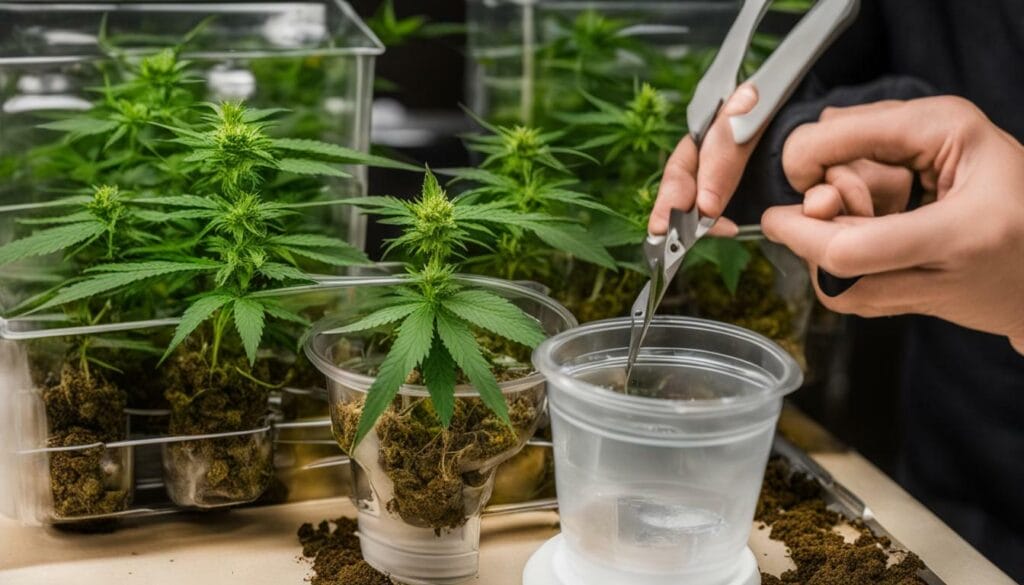
Once your clones have developed strong roots, it’s time to transplant them into their growing containers. Carefully remove each clone from its rooting medium, ensuring no damage to the delicate roots.
Fill your growing containers with fresh soil and make a small hole in the center of each one. Gently place each clone to ensure it’s positioned upstairs, the roots fully covered by soil.
Water your clones immediately after transplanting, using a gentle stream to avoid disturbing the soil. Keep the soil moist but not waterlogged, and avoid overwatering, as this can lead to root rot.
As your clone grows, monitor them regularly for any signs of stress or nutrient deficiencies. Ensure they receive enough light, water, and nutrients, and adjust accordingly if needed.
Remember also to provide appropriate ventilation and maintain the ideal temperature and humidity levels in your grow space. A high-quality cannabis nutrient solution can also help you receive the nutrients necessary for healthy growth. Following these steps for transplanting and caring for your rooted clones can help ensure their healthy growth and a bountiful harvest.
Monitoring and Troubleshooting Clones
As you go through the cloning process, monitoring your clones regularly for signs of stress or issues is essential. By doing so, you can catch problems early and take steps to address them before they become more severe. Here are some cloning tips and best practices for monitoring and troubleshooting your clones:
Keep an Eye on Your Clones
After taking clones and establishing rooting conditions, closely monitor your clones for the first few weeks. Check for signs of stress, such as wilting, yellowing, or drooping leaves. Keep an eye on the temperature and humidity levels in your cloning environment, as fluctuations in these factors can cause stress on your clones. Regularly examine your clones for signs of mold or other fungal growth, which can damage or kill your clones.
Addressing Common Clone Problems
Even with the best care, problems can arise during the cloning process. Here are some common issues and their solutions:
| Problem | Solution |
|---|---|
| Wilting or drooping leaves | Ensure your clones are getting adequate moisture and avoid overwatering. Cut back on light exposure to reduce stress. |
| Yellowing leaves | Check your nutrient levels and adjust as needed. Reduce light exposure and stress. |
| Mold or fungus growth | Remove infected clones, and adjust your environmental conditions to reduce humidity. |
If you notice any issues with your clones, immediately address the problem. The longer you wait, the more difficult it may be to salvage the clones.
Seeking Help
If you encounter issues during the cloning process that Yocannotto resolves, don’t hesitate to seek help. Reach out to other growers in online communities or forums with cloning experience. Or, consider reaching out to a professional cloning service for assistance.
By following these cloning tips and best practices for monitoring and troubleshooting, you can catch problems early and take steps to ensure successful cloning.
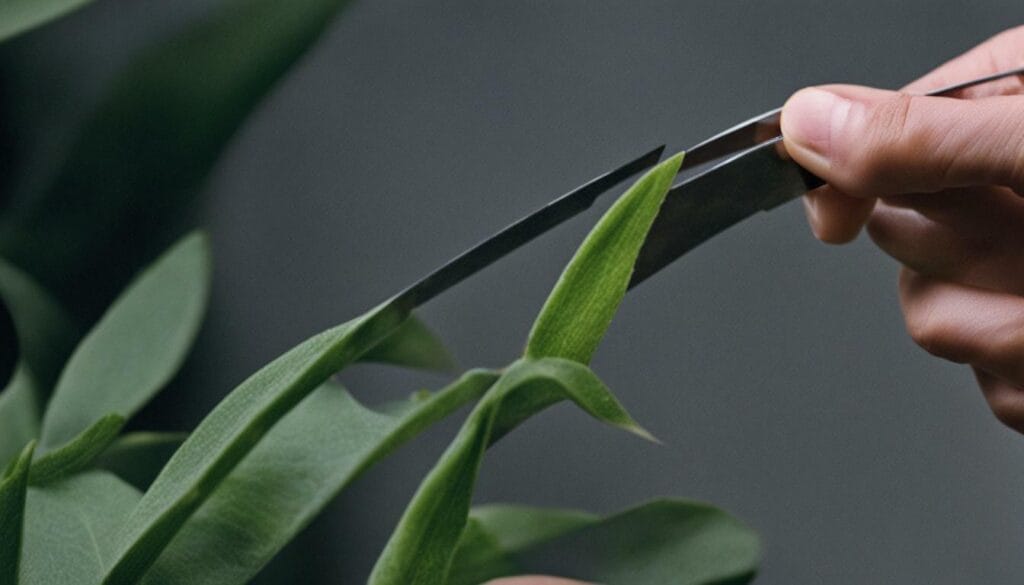
After your clones have rooted, it’s time to prepare them for the transition to the central garden. Hardening off is a critical process that gradually acclimates your clones to outdoor conditions, preventing shock and stress during transplanting.
Start by exposing your clones to outdoor conditions for short periods each day, gradually increasing their time outside over several days. Please place them in a sheltered area, protecting them from direct sunlight, wind, and extreme temperatures.
While hardening off, closely monitor your clones for signs of stress or issues. Keep a close eye on their water and nutrient levels, making adjustments as necessary.
Once your clones have successfully adapted to outdoor conditions, it’s time to transplant them into their final growing containers in the central garden. Follow the same transplanting techniques used during the rooting phase to provide the necessary care, including proper watering, nutrient supplementation, and lighting conditions.
Monitor your clones closely throughout the transplanting and growing phases for signs of stress or issues. Stay vigilant and address any problems promptly to ensure the health and success of your cannabis plants.
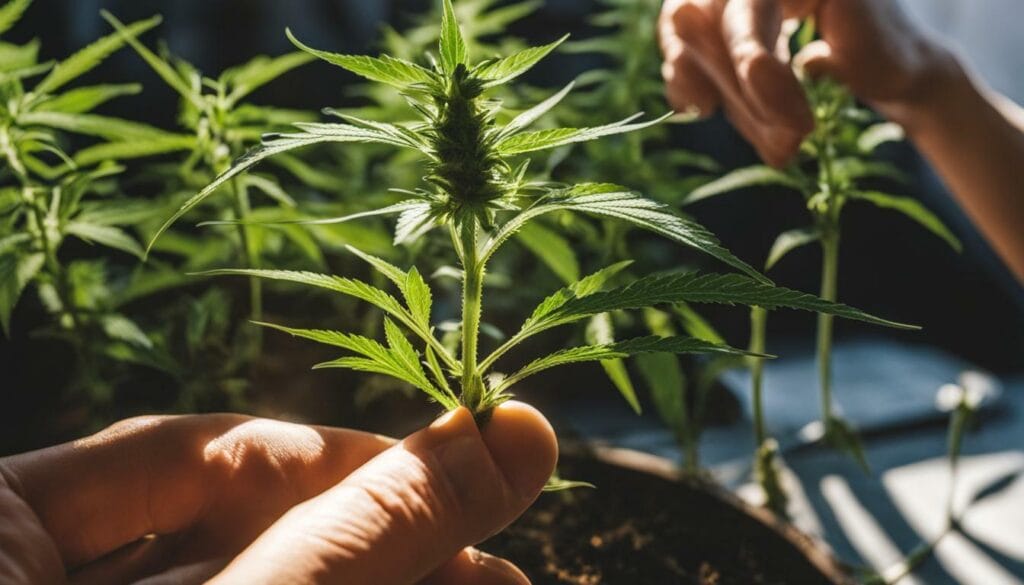
In cannabis cultivation, cloning is a valuable technique for maintaining genetic consistency and preserving desirable traits. By following the step-by-step guide outlined in this article and using best practices for clone care, you can successfully propagate cannabis plants and boost your yield.
How To Take Clones of Cannabis Plants: Conclusion
That’s it! You have fully understood the process and acquired the propagation techniques for successful cloning. By following this step-by-step guide, you can ensure genetic consistency and produce the highest-quality clones by choosing healthy mother plants, properly preparing your tools and environment, and providing your clones with the optimal conditions for rooting. Additionally, pay close attention to your clones throughout the process and promptly address any issues.
At SeedsHereNow.com, we offer an extensive selection of high-quality cannabis seeds to meet your cloning needs. Whether you’re a beginner or an experienced grower, we have everything you need to succeed in your cannabis cultivation journey.
Choose SeedsHereNow.com for All Your Cloning Needs
Our team of experts is always available to help you with any questions or concerns about cloning and cannabis cultivation. Trust SeedsHereNow.com for all your cloning needs, and start producing the best clones today.
FAQ
How long does it take for clones to root?
On average, clones take about 1-2 weeks to develop roots. However, the time can vary depending on the strain, environmental conditions, and cloning techniques.
Can I clone a flowering plant?
It is possible to clone a flowering cannabis plant, but the success rate may be lower compared to cloning from a vegetative plant. It’s generally recommended to clone from a healthy vegetative plant for the best results.
How many clones can I take from one mother plant?
The number of clones you can take from a single mother plant depends on its health, size, and the desired size of your clones. As a general guideline, no more than 20% of the mother plant’s foliage is recommended e to ensure its continued health and vigor.
Do I need to use the rooting hormone when cloning?
While rooting hormone is not strictly necessary for cloning, promoting root development can significantly improve the success rate. Using a rooting hormone gel or powder can increase the chances of successful rooting and expedite the process.
What is the best cloning medium to use?
Several cloning mediums are available, including wool, peat plugs, and coco coir. The best medium for cloning depends on personal preference and environmental factors. Experiment with different mediums to find the one that works best for you.
How often should I mist my clones?
Maintaining a humid environment for your clones is important s to encourage root growth. Misting your clones 2-3 times a day is usually sufficient, but monitor the humidity levels and adjust accordingly. Be careful not to over-mist, as excessive moisture can lead to mold or rot.
Can I use tap water to mist my clones?
Tap water can contain chlorine or other chemicals that may harm your clones. It’s best to use filtered or distilled water to mist your clones. Alternatively, leave tap water out overnight to allow the chlorine to evaporate before using it.
Should I use artificial light for rooting my clones?
Yes, providing artificial light is crucial for root development in clones. Use fluorescent or LED lights with a spectrum optimized for vegetative growth. Aim for a light cycle of 18-24 hours daily to ensure your clones receive the necessary light energy.
How do I know if my clones have rooted?
You can check if your clones have been rooted by gently tugging on them. If they offer resistance and show signs of new growth, such as leaves or shoots, it’s a good indication that rooting has occurred. Alternatively, you can carefully remove the clone from its medium to inspect the development of roots.
When can I transplant my rooted clones into their final containers?
Once your clones have developed a healthy root system, usually after 7-14 days, they are ready to be transplanted into their final containers. Ensure the containers have proper drainage and are filled with well-draining soil or growing medium for optimal root growth.
Back

